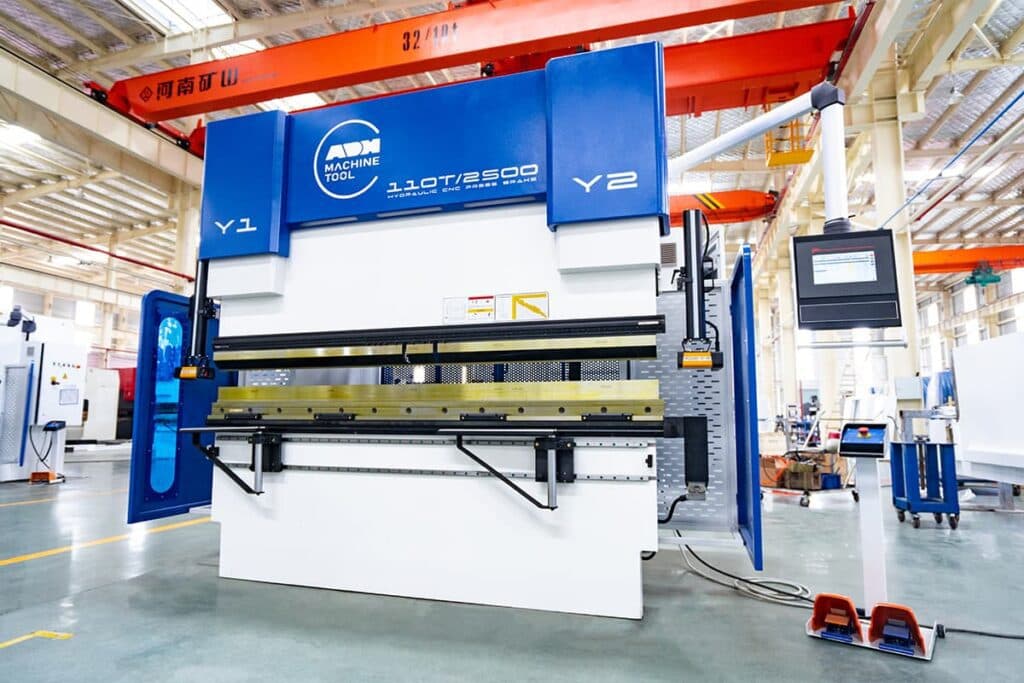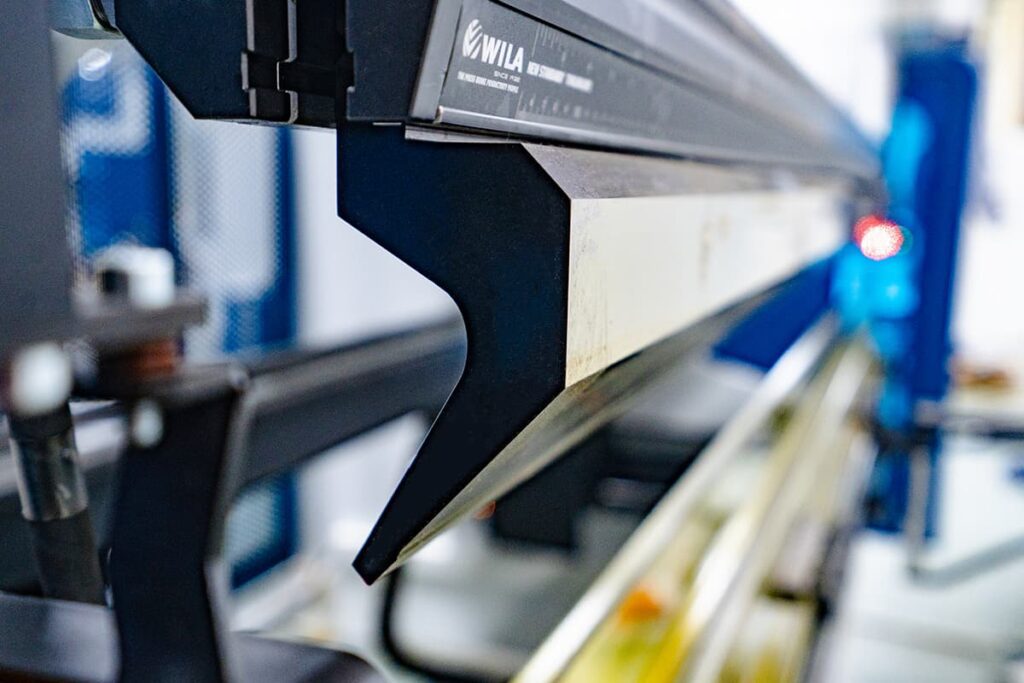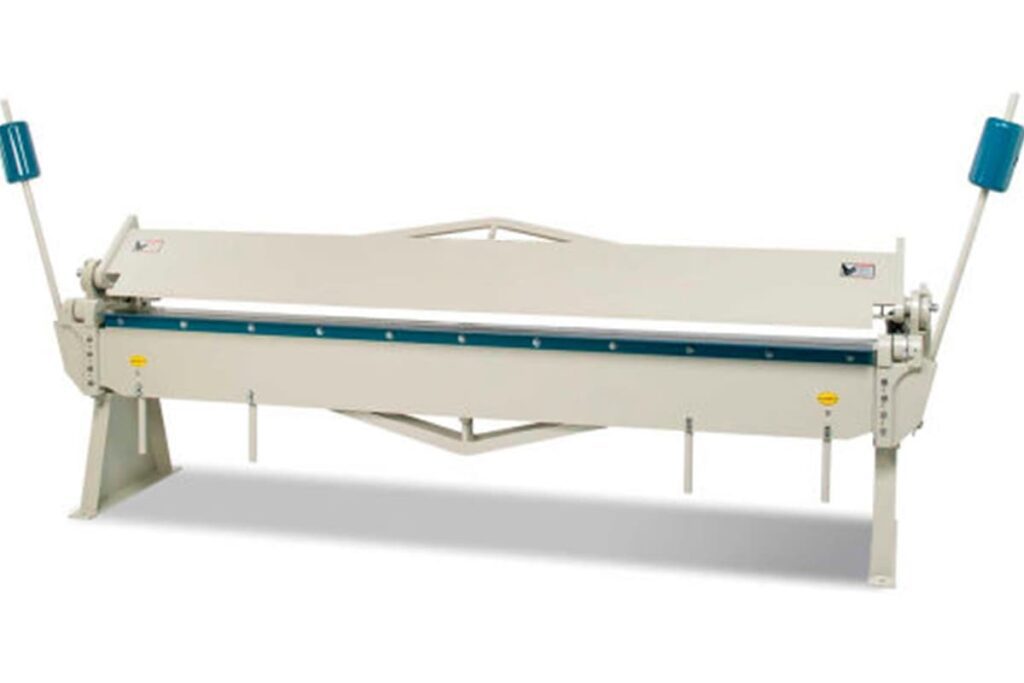CNC Press Brakes: Precision & Efficiency Unleashed
I. Exploring the World of CNC and CNC Press Brakes
CNC press brakes, vital in sheet metal fabrication, outperform manual models in precision, efficiency, and safety. Their role in manufacturing is set to grow.
1. CNC Demystified: A Quick Scan of the Fundamental Idea
CNC, short for Computer Numerical Control, refers to an automated machine tool controlled by a program.
The control system can logically process a program with control codes or other symbolic instructions. By decoding these through a computer, the machine tool performs the pre-set actions.
2. CNC at Work: Changing the Face of Press Brake Operations
CNC technology offers high automation, significantly reducing labor intensity. It ensures high precision and stable quality in part production.
With its high production efficiency, it can drastically shorten product development cycles.
CNC provides a fast track for the research and development of new products, as well as improvements and modifications to existing products.
II. What is a CNC Press Brake

1. Intro: CNC Brake
A CNC press brake uses equipped dies (either general or specialized) to bend sheet metal in its cold state into workpieces of various geometric cross-sectional shapes.
2. Unpacking the CNC Press Brake
(1) Frame
The main structure that provides stability and support for the machine.
(2) Ram
The ram section uses hydraulic transmission, consisting of the ram, cylinders, and a mechanical stop block fine-tuning structure.
The left and right cylinders are fixed to the frame, using hydraulics to move the piston (rod), driving the up and down movement of the ram.
The mechanical stop block's adjustment is controlled by the numerical control system.
(3) Worktable
The worktable section is operated by a button box, causing the motor to drive the backgauge to move forward and backward.
The distance of movement is controlled by the numerical control system, with a minimum reading of 0.01 millimeters (both front and back positions have travel switch limits).
(4) Bed
The lower part of a bending machine where the workpiece is placed during bending.
(5) Hydraulic System
The hydraulic system is responsible for generating the force required to bend the workpiece. It typically consists of hydraulic cylinders, pumps, valves, hoses, and hydraulic power units. The hydraulic system controls the movement of the ram, clamping of the workpiece, and other hydraulic functions.
(6) Synchronization System
Unlike a conventional bending machine, this machine uses servo valves and grating rulers to form a closed-loop hydraulic circuit, thus precisely controlling the various movements of the press brake.
(7) Control System
The control system is the brain of a CNC press brake. It includes a computer control panel or touch screen interface that allows the operator to input bending parameters, program sequences, and monitor the machine's status. The control system communicates with various components and sensors to execute the programmed bending operations.
(8) Motor Controls
The electrical system includes motor controls to regulate the operation of electric motors used in the press brake. These controls can include motor starters, contactors, servo drives, or variable frequency drives (VFDs). They govern the speed, direction, and torque of the motors, controlling the movement of the ram, back gauge, and other motorized parts.
(9) Back Gauge
An electric or manual adjustment device that allows precise positioning of the workpiece for bending. It helps ensure consistent and accurate bending angles.
(10) Control Panel
The control panel is where the operator interacts with the CNC press brake. It typically includes a touch screen interface or computer control system. The operator can input bending parameters, program sequences, and monitor the machine's status and diagnostics.
(11) Foot Pedal
In addition to the control panel, some CNC press brakes are equipped with a foot pedal, which allows the operator to activate specific functions, such as clamping or releasing the workpiece.
(12) Crowning System
To compensate for the deflection of the bending machine frame and maintain consistent bending accuracy, some CNC press brakes are equipped with a crowning system. It can adjust the shape of the bed to counteract any deformation caused by bending forces.
(13) Tooling
Tooling is a crucial part of the CNC press brake, as it shapes the workpiece during bending. Tooling includes a punch, which applies the bending force, and a die, which provides the desired bending angle. Different types of punches and dies are used depending on the material, thickness, and desired bend angle.
(14) Tool Storage
CNC press brakes often integrate tool storage systems into the machine. These systems can accommodate multiple tool options, allowing for quick tool changes to meet different bending requirements.
(15) Safety Features
The electrical system has safety features to protect the operator and prevent accidents. These include safety light curtains, emergency stop buttons, safety interlock devices, and other safety devices. The electrical system ensures that these safety features are properly integrated and functional, enhancing the overall safety of the CNC press brake.
(16) Wiring and Cables
The electrical system includes wiring and cables used to connect various electrical components, sensors, and actuators. Proper wiring and cable management are crucial for maintaining electrical safety, minimizing interference, and ensuring reliable communication between components.
3. Diverse Types of CNC Press Brakes
CNC press brakes are generally divided into two types: CNC synchronized torque press brakes and electro-hydraulic servo CNC press brake.
- CNCÂ synchronized torque press brakes offer precise metal bending with synchronized movement, advanced control, and versatile tooling options for optimal accuracy and efficiency.
- Electro-hydraulic servo CNC press brake is a precision machine tool that utilizes electrical and hydraulic systems to digitally control and synchronize the metal bending process.
4. Various Applications of CNC Press Brakes
CNC press brakes are widely used in various industries such as construction, automobile manufacturing, home appliances, and communication equipment.
Within these industries, CNC press brakes can produce parts of various specifications and shapes. These parts can be incorporated into products with different size and shape requirements.

III. How to Operate a CNC Press Brake
1. Safety First: Always wear proper safety gear, including safety glasses and gloves. Make sure your work area is clean and free of obstructions.
2. Understand Job Requirements: Review the design specifications of the workpiece you are bending, including material type, thickness, and bending angle.
3. Set up the Machine: Input the required data into the CNC system, such as bending angle, plate thickness, bending speed. The machine should have a library of materials to choose from and can automatically adjust its settings based on those inputs.
4. Installation and Inspection of Tooling: Set up suitable dies and punches according to specifications. Make sure they are properly secured and aligned to avoid any inaccuracies during bending.
5. Loading: Put the sheet metal on the support of the machine and align it with the back gauge or other positioning devices.
6. Test run: If possible, use a piece of scrap for a test run. This helps ensure the machine is set up correctly and the bends are accurate.
7. Start Bending Process: Once everything is set correctly, start the machine. Monitor the process to make sure everything runs smoothly.
8. Inspection: After bending, the workpiece is inspected to ensure that it meets the design specifications. Use appropriate measuring tools such as protractors, calipers, or a coordinate measuring machine (CMM).
9. Shutdown and Cleanup: When the job is complete, shut down the machine, remove tools, and clean up the work area.

IV. What Is the Difference Between Manual Press Brake and CNC Press Brake
Precision: CNC press brakes, due to their computer-controlled operation, offer a higher level of precision than manual press brakes. They can bend metal with accurate dimensions and angles. Manual press brakes, however, depend on the operator's skills, which can lead to variability in results.
Speed & Efficiency: CNC press brakes can operate continuously at high speeds, significantly increasing productivity. On the other hand, manual press brakes require manual intervention and physical labor, making them slower and less efficient.
Automation: CNC press brakes can automatically execute complex operations once programmed, reducing the requirement for continuous operator input. In contrast, manual press brakes require operators to stay actively engaged and input consistently.
Flexibility and Complexity: CNC press brakes, because of their programmability, can handle complex bending operations, making them adaptable for various tasks, including intricate and complicated designs. Manual press brakes have a more limited capability in handling complex tasks.
Safety: CNC press brakes are generally safer than manual press brakes as they limit direct interaction with the machine during operation, reducing the risk of operator injuries.
Training: Operating a CNC press brake requires knowledge of the machine's programming and operation, while manual press brakes need more traditional machining skills. The technical skill level required for CNC operation may be higher than manual operation.
Cost: The upfront cost of manual press brakes is typically lower than CNC press brakes. However, in the long run, the higher productivity, precision, and less waste of CNC press brakes might make them more cost-effective.
Output: With their high speed and level of automation, CNC press brakes are the ideal choice for large-scale production. Manual press brakes are better suited for smaller runs or prototype creation, where the advantage of longer setup times for CNC machines is less significant.
V. Conclusion
CNC press brakes play a critical role in manufacturing and the metal fabrication industry. They offer precision, efficiency, and versatility in shaping metal parts, reducing waste and human errors.
So now that you know what it is and how it works, the next step is to purchase a machine that will yield the best output for you.
ADH is a professional sheet metal machinery manufacturer with 20 years of experience. The press brake is our flagship product.
We can help you choose the right press brake and provide robust after-sales support. If you need information about our press brake, please contact our sales staff or browse our press brake product page.

Download the Infographic With High Resolution
Pulp Egg Box Machine,hot press machine,egg carton mold machine
Huatao Group Limited , https://www.sjzpulpmolding.com